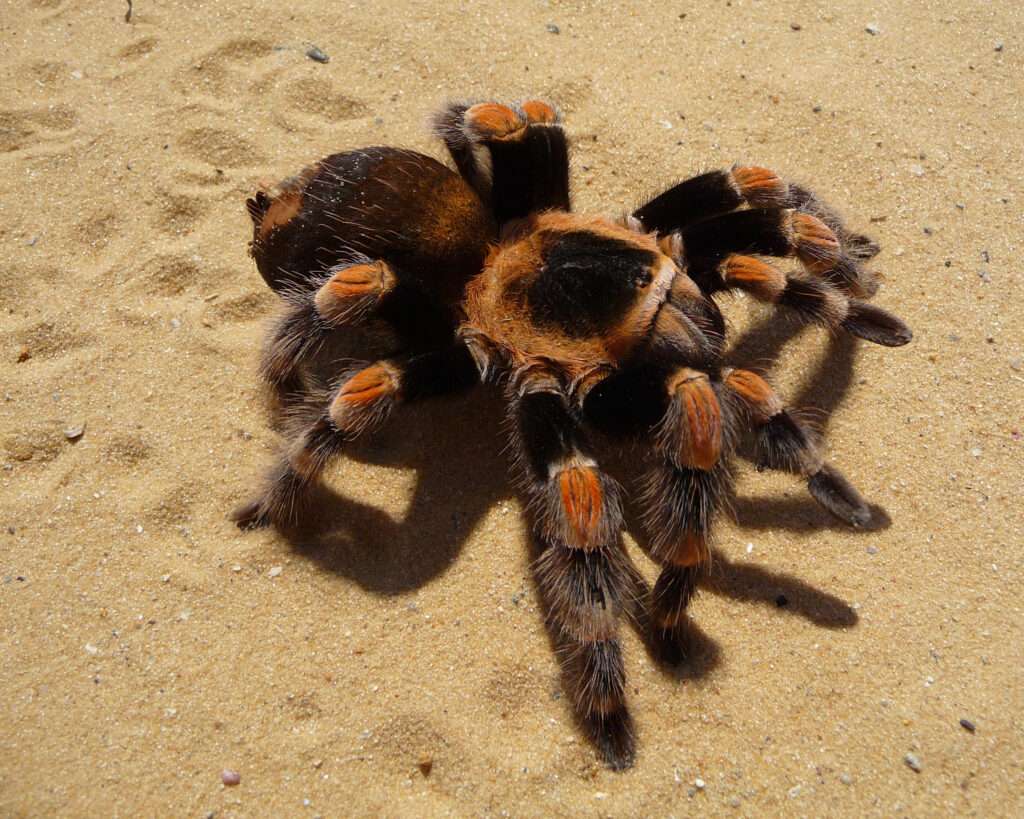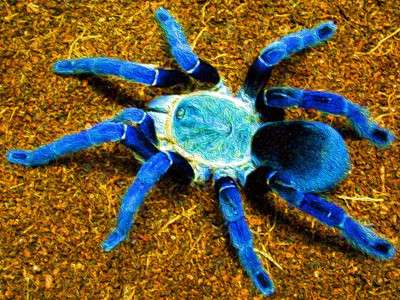
Mexico is home to a species of tarantula called Brachypelma hamorii. Both have been referred to as Mexican redknee tarantulas and have been mistaken for B. smithi. B. smithi is mentioned in numerous older texts, many of which either conflate the two species or refer to B. hamorii. Native to the western sides of the Sierra Madre Occidental and Sierra Madre del Sur mountain ranges in the Mexican states of Colima, Jalisco, and Michoacán, B. hamorii is a terrestrial tarantula. The species is a huge spider, with adult males having legs up to 75 mm (3 in) long and mature females having a total body length of over 50 mm (2 in). For enthusiasts, Mexican redknee tarantulas are a popular option. It lives a long time, just like the majority of spiders.
Appearance
- The spider Brachypelma hamorii is quite huge. Seven females were included in the sample, and their total body length (excluding chelicerae and spinnerets) ranged from 52 to 54 mm (2.0 – 2.1 in).
- A significantly smaller sample of 11 males was used; their total body lengths ranged from 46 to 52 mm (1.8–2.0 in). Males have longer legs while having slightly shorter bodies.
- The fourth leg, which measures 75 mm (3 in) in the case of the male type and 67 mm (2.6 in) in the case of the female, is the longest.
- The legs and palps are black to reddish black with three different colored rings: faint orange-yellow on the lower portion of the tibiae, yellowish-white at the end of the metatarsals, and deep orange on the part of the patellae nearest to the body.
- The upper surface of the abdomen is black, and adult males have a faint greyish-red border around their carapace as well as a darker reddish-black marking running from the middle to the front of their heads.
- Carapace color and pattern variations are greater in adult females. The carapace may be primarily black with a brownish-pink border, or it may have a “starburst” pattern of light orange-yellow spots scattered throughout the dark section.

What Places Have Red Knee Tarantulas?
On opposing sides of the Balsas River basin where it empties into the Pacific, B. hamorii and the very similar B. smithi are found along Mexico’s Pacific Coast. In the northern Mexican states of Colima, Jalisco, and Michoacán, B. hamorii can be found. The species’ native environment is in hilly tropical woods with deciduous trees. It creates or enlarges burrows among prickly bushes and long grass, behind logs, rocks, and tree roots.
What food do red knee tarantulas consume?
Only consume live food, such as cockroaches, locusts, crickets, and mealworms, which should be offered once or twice a week, depending on the meal.
Behavior
When startled, they kick urticating’s hairs from their abdomens and their rear legs as most New World tarantulas do instead of biting. Although they are thought to be quite docile and just slightly dangerous to humans, all tarantulas have huge fangs that can puncture skin and inflict excruciatingly painful wounds that, if left untreated, can develop into secondary bacterial infections and worsen allergies.
Molting
B. hamorii is an arthropod, like all tarantulas, and must molt in order to grow. The tarantula’s outer covering (shell) is renewed during the process of molting, and any appendages that are lost are replaced. Depending on the tarantula’s age, they molt (lose their skin) frequently throughout the course of the year. The tarantula can only expand by replacing its exoskeleton from below because it cannot stretch. With each succeeding molt, a tarantula may gradually regrow lost appendages. The spider slows down and stops eating just before molting in order to save as much energy as possible.
Its abdomen becomes darker; underneath is the new exoskeleton. The spider often spends many hours on its back when molting, pushing fluids just beneath its old exoskeleton and wriggling its limbs to release the old and display the new exoskeleton. Following completing this task, the tarantula stops eating for a few days to weeks, and occasionally for as long as a month after a molt because its fangs are still soft. The fangs are a component of the exoskeleton and are shed together with the rest of the skin. The entire procedure, which can take several hours, replaces the tarantula’s old, worn-out skin with a wet, fresh one.
Keeping as Pet
How are Red Knee Tarantulas to be handled?
A 20 gallon tank is the ideal size for a Mexican red-knee tarantula. The Mexican red-knee tarantula’s tank should have the proper humidity and temperature levels. The tank’s temperature should remain between 75 and 80 degrees Fahrenheit. This can be accomplished by putting a heating mat under one part of the tank. Feed cockroaches, crickets, and locusts, among other large, live insects, to your Mexican red-knee tarantula.
Table





